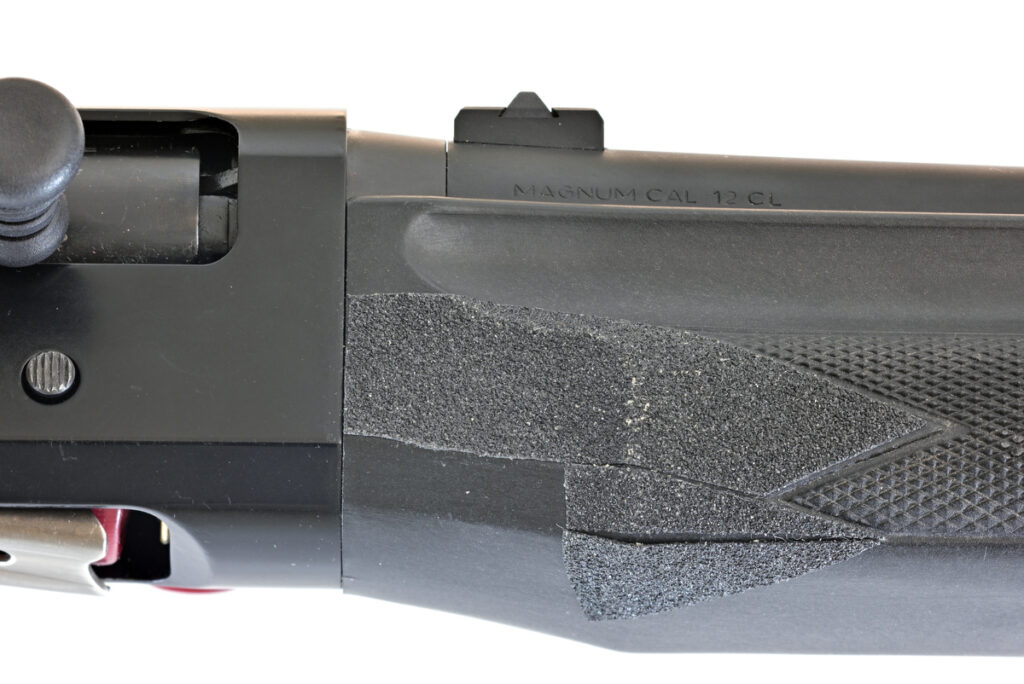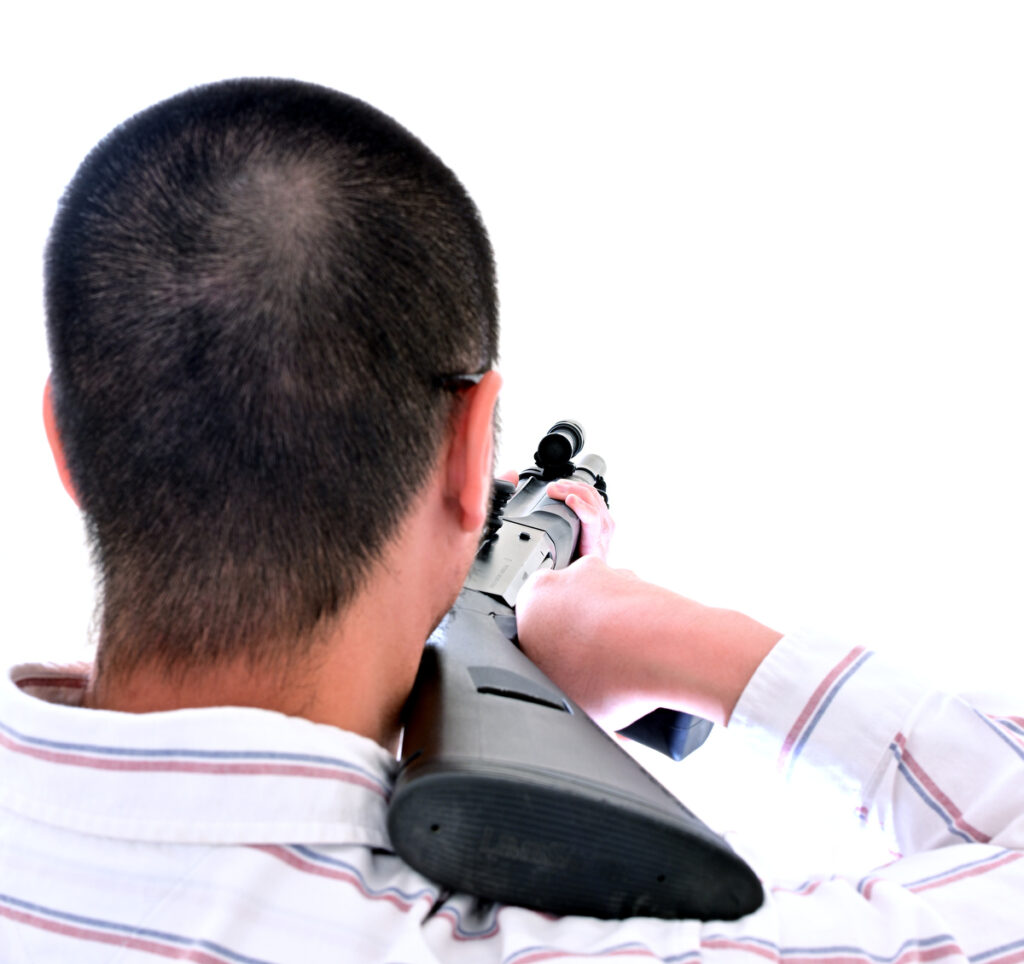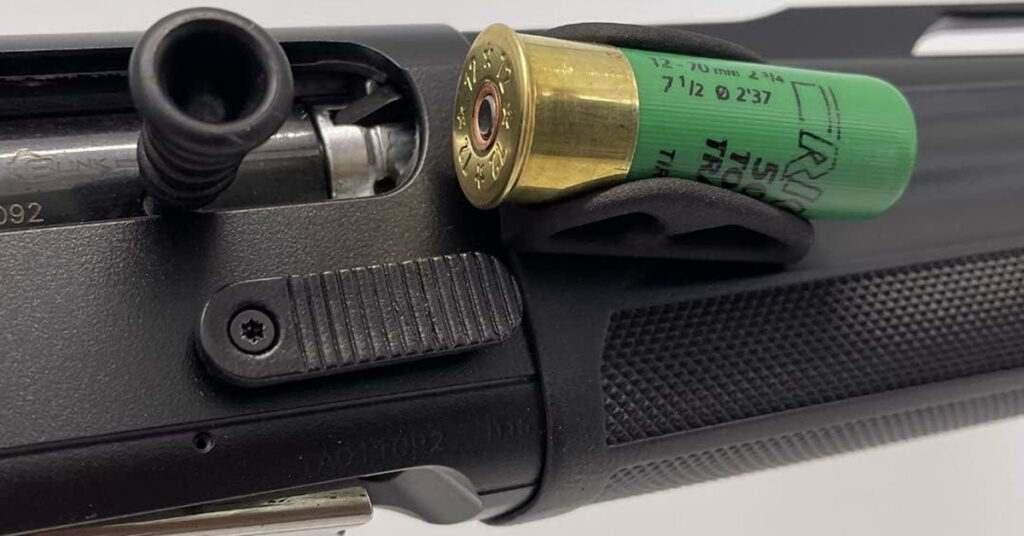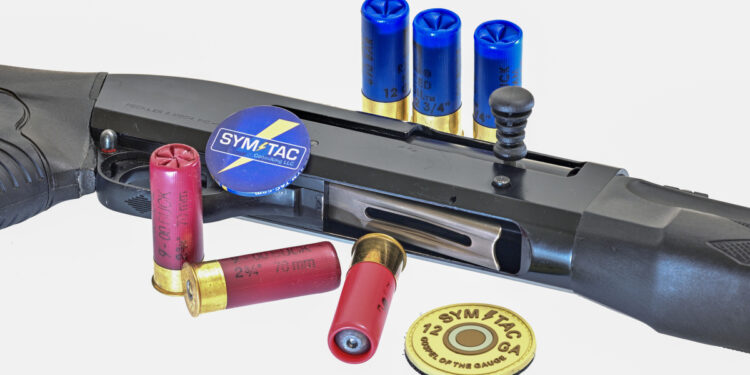Technological progression seems to have pushed shotguns more and more into a niche role, and possibly into obsolescence. Once found in every abode of the American colonial frontier, they were supplanted by muskets in linear warfare although some, such as the 12th New Jersey Volunteer monument at Gettysburg, still employed the buck and ball load. Repeating rifles, first manually operated during the Old West and WWI then self-loading during WWII, dominated infantry arms; shotgun moved into the niche role of trench and jungle warfare. Law enforcement use kept it relevant until compact SMGs and carbines became ubiquitous in the last decades. With citizens and law enforcement alike adopting the carbine for its light weight, low recoil, and capacity, I thought we would see off the scattergun into the dustbins of history.
Having grown up with low recoiling carbines myself, I have always shunned shotguns because of recoil. It was barely tolerated only because of 3-gun competition. Symtac changed that with Rob Haught’s signature push-pull recoil reduction technique. I came away from the course bruise-free and with a new appreciation on the utility of a shotgun.
PUSH-PULL RECOIL CONTROL
Recoil forms the primary entry barrier to shotguns, causing some to shied away despite its undeniable terminal effects. Symtac’s push-pull technique tear down those barriers and unlock the closest thing to a one-shot-stop that you can buy over the counter. The theory is deceptively simple: push with the support hand while pulling with the dominant hand, as if one were stretching out the gun to absorb recoil with isometric tension. The devil is in the details: I learned to push a lot more than I think need, and to aggressively lean forward.

Pulling hard enough is easy with a field stock, and it is even easier with a pistol grip stock. I fell short on pushing with my triceps as well as grip strength. My Benelli M1 forend, carried over from a field gun, was too slick; this demanded an iron grip that tired my hand quickly. To solve this, I anchored my hand on the ramped portion for better purchase and bending my elbow to better push forward. At the end of my first day, my fatigued muscles were sore and required some physical therapy to finish the second day. Since then, I have added more tricep work to my gym routine and applied grip tape to the forend.
The second lesson learned is to aggressively lean into recoil. Light recoiling carbines have spoiled us all with forgiving shooting positions, and the shotgun now showed me the error of my ways. Once I pointed my toes towards the target and leaned forward into the gun, I better managed muzzle rise and decreased my split times. While I recognize that shot timing is dictated by the situation and not my body posture in real life, there is value in learning good body posture. Taking a half-step to lean into the gun for a plate rack in 3-gun is well worth the effort.
Contrary to initial fears, this technique did not induce any short-stroking malfunctions with my inertia driven Benelli M1 shooting 1 1/8oz #8 birdshot. Upon reviewing videos, I noticed the empty hulls were weakly dribbling from the gun, possibly due to the technique robbing some energy from the inertia system; gas systems (e.g., Benelli M4 or Beretta 1301) may be affected less. You can play the video above at 1/2 speed to see the shells slow ejection.
Two full days of shooting did not bruise my shoulder. Nine pellet buckshot (i.e., not a reduced recoil load) and slug shells felt no different than birdshot. After many repetitions, my jaw swelled slightly, presumably due to cheek slap. This was eliminated by mounting the gun from the side rather than pressing my cheek vertically into the stock. The lack of recoil was further confirmed by instructors demonstrating from less than supported positions, and students shooting from a seated position. Breaking down this barrier opened up the possibility of short-stocking a shotgun to manage its length.
SHORT-STOCKING
Taming recoil allowed me to short-stock the shotgun and flow through thresholds easily in close quarters battle (CQB). Excluding NFA controlled guns due to accessibility and excluding NFA driven innovations due to inefficiencies, shotguns (minimum barrel length of 18 inches) can be longer than the popular 5.56 mm carbine (minimum barrel length of 16 inches). For example, my Benelli M1 has nearly 20 inches of barrel.
To move through a threshold efficiently, Orion Training Group taught me to short-stock my rifle vertically over my shoulder to avoid catching the magazine on door frames. Despite proven terminal effects on target, I initially rejected shotguns because I did not know how to fire from this collapsed position. Symtac corrected my thinking.

Symtac taught turning the shotgun sideways, ejection port up for right-handed and down for left-handed. With no magazine to catch on door frames, my primary concern is to avoid cheek slap by placing the flat of the stock against my shoulder to maintain separation. My support hand thumb is wrapped over the barrel for a good pushing grip; I wore gloves to protect against a scalding barrel. Being left-handed, I did not experience any cycling issues with a semi-automatic despite pointing the ejection port down. However, the instructor did caution us to roll a pump gun 45-degrees before cycling to prevent gravity from pulling a fresh shell out the ejection port.
Shooting from the short-stock position requires point shooting, which was initially uncomfortable for me. My night vision experiences conditioned me to rely on a laser pointer, but repetition built my competence from bad breath distance to fifteen yards. Symtac also built my skills to quickly transition from point shooting to giving aimed fire from the shoulder. The importance of both point shooting and transitions were evident from their incorporation into the skills test: point shoot one slug from short-stock, transition to aimed fire from the shoulder for two slugs, perform emergency reload, then fire one more slug to the head. It is at the emergency reload where I learned my third lesson: the value of a match saver.
MATCH SAVER
Shotguns lack capacity and are slow to reload. An 18-inch barrelled gun has enough tube length to only hold six shells in a cruiser-ready configuration (tube full, lifter empty), and only eight if I load the chamber and ghost load. Some users even down-load the tube (i.e., load five if the capacity was six) to simplify a slug-select (not covered in this course). Low capacity, and the possibility of a shotgun being the only weapon in a grab-and-go scenario, drives home the need for a fast emergency reload.

For emergency reloads during this course, I placed a shell on my belt, brass up. While I muddled through, I learned it’s inefficient compared to a match saver because my hand must travel further. A match saver holds one shotshell horizontally on the gun, in-front-of and in line with the ejection port, with the brass end facing shooter. To reload, one just needs to palm the shotshell straight rearward, through the ejection port, then close the bolt and fire. Shorter distance makes this faster than reaching into my belt. Furthermore, this is easier to accomplish in the dark than searching my belt for a shell.
A match saver also has the advantage of always staying with the gun. In a grab-and-go scenario, one may lack the luxury to don additional ammunition sources. This is especially important as I eschewed side saddles to reduce weight. My match saver can carry either an emergency reload or a slug when, precision is required. I am grateful to learn this valuable, and easily applied, lesson in an academic setting.
CONCLUSION
Prior to this class, I relegated the shotgun to anti-avian warfare due to its recoil and length. With the push-pull recoil reduction technique taken to heart over many repetitions, Symtac then taught me to short-stock a shotgun for CQB. This unlocked its well documented terminal effectiveness, leading me to perhaps keep a shotgun handy for close encounters.












